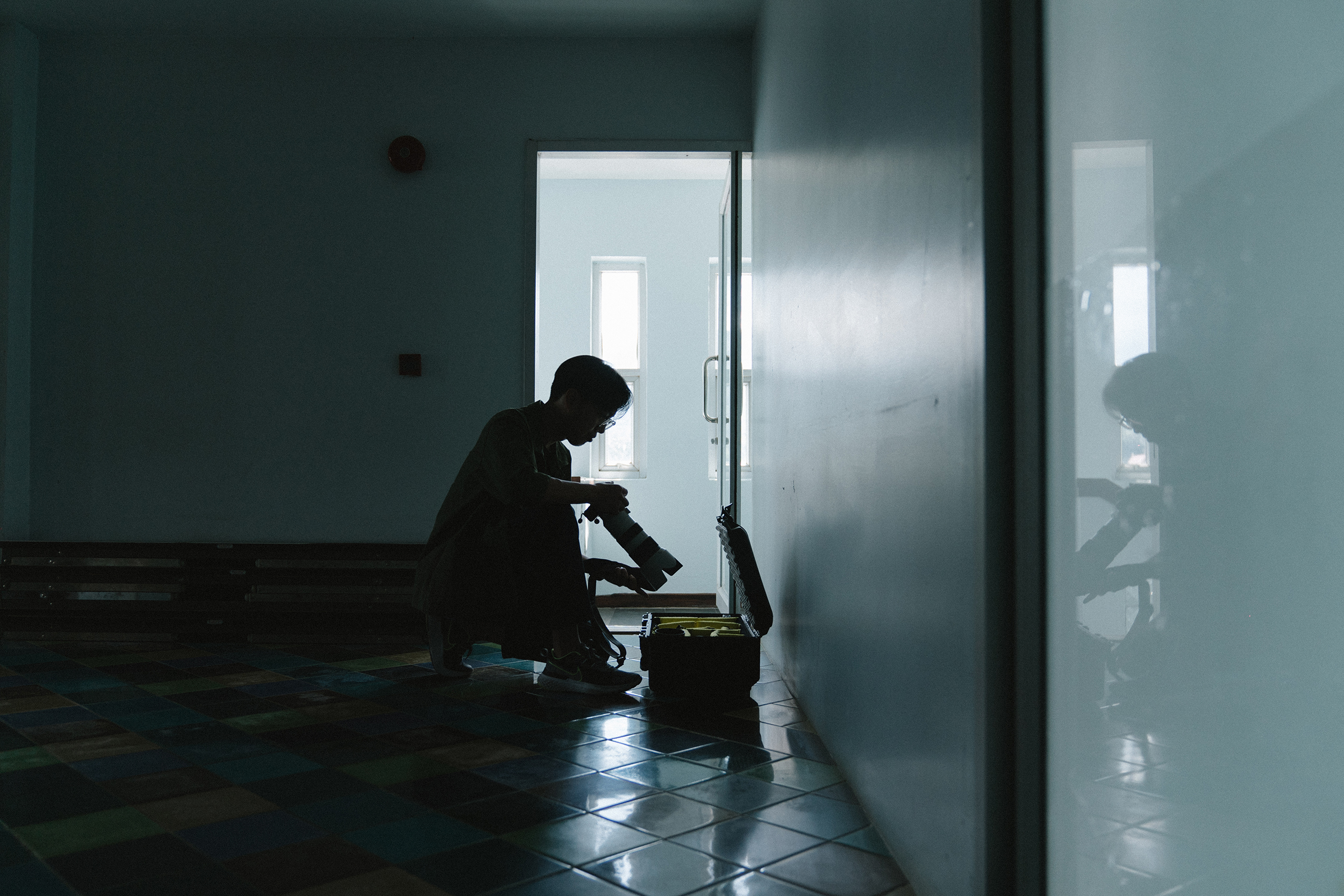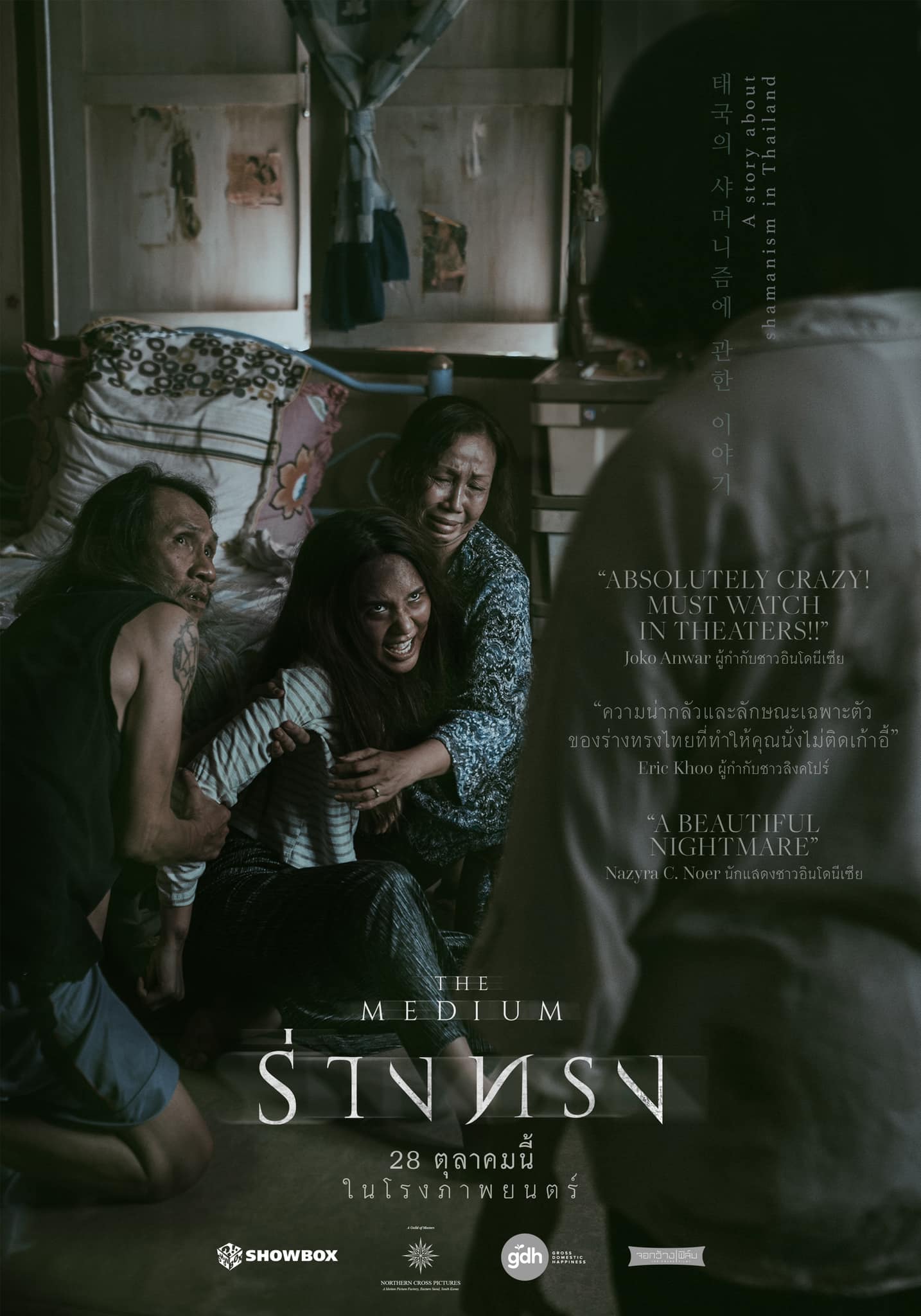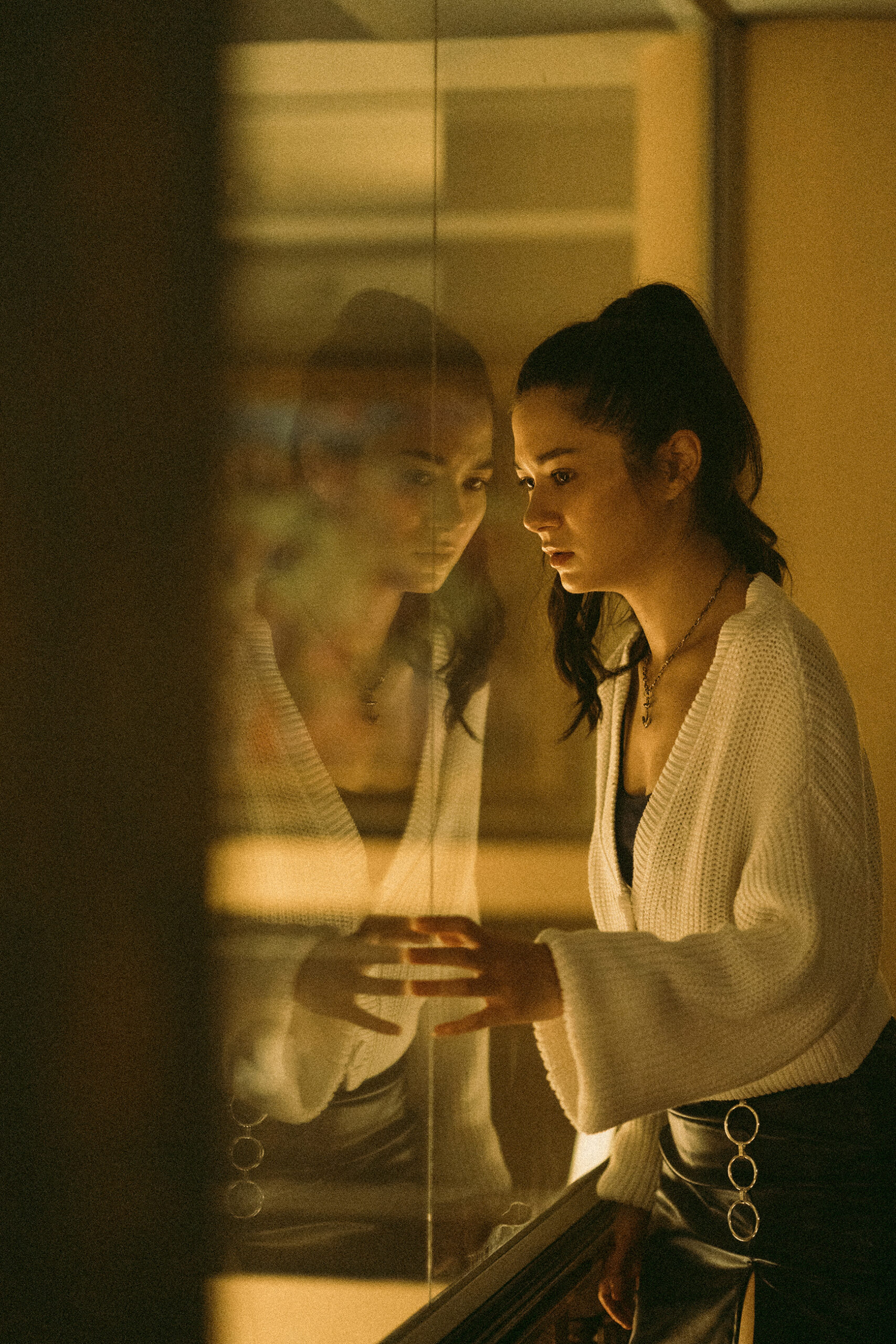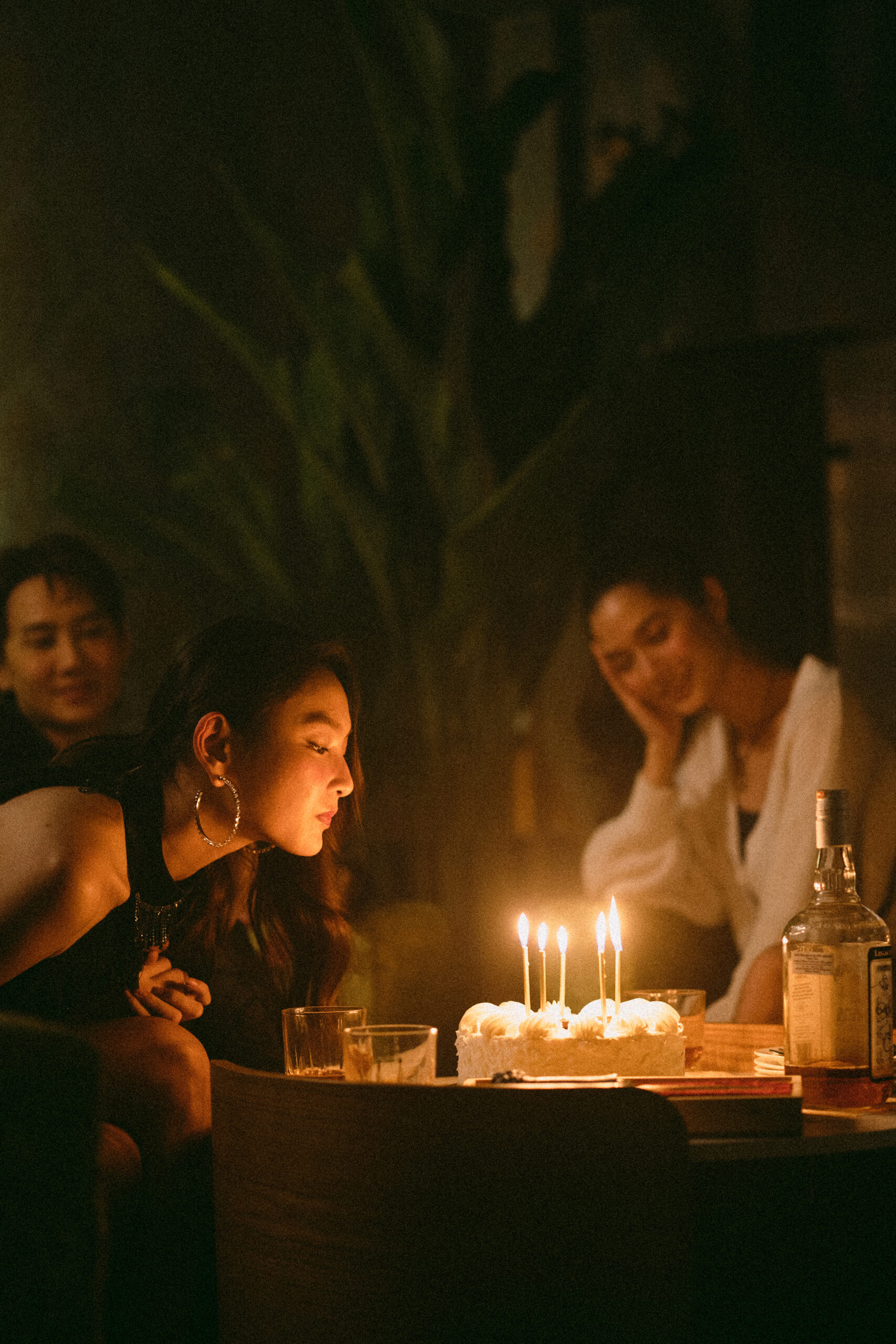Photographer : Thanwa Lujintanon
Translator : Ravit Buaphan
What motivates our decision to watch one movie? It might be a list of our favorite directors, our favorite genres, those trailers with the editing that tempt us to buy tickets. It could be still shots from the movie scenes released as a spoiler of what is going to happen in the film. These photos are the work of still photographers, or the photographer that takes photos on the set of the movie.
The most recent work through the lens of Oat – Sasidis Sasisakulpon is from ‘The Medium’, the latest directing work by Tong – Banjong Pisanthanakun. Be it the film poster that has been used for worldwide promotion, the character photos set giving us a glimpse of the atmosphere after entering the cinema, or still shots from the movie scenes that the characters show their emotions, these photos were not simply done by pausing a video and capturing a shot. They were the results from Oat’s venture as a still photographer of the film set, the position he has been holding for more than 10 years. What about the job that has captivated him for this long? What do still photographers do and are they still essential in the present day? Today he will be answering these questions with us D1839 in the midst of preparation for a new film under the same position.
Why did you choose to be a Still Photographer?
Actually it wasn’t that I chose the job, it was the job that chose me. Especially for the photographer job, the job always chose me except for the personal ones. This could be the reason why the term ‘personal jobs’ emerged.
If the job chose you, did it make the right choice?
This job actually fits my lifestyle, that’s why I’ve been able to do it through the past 10 years. I see myself as an explorer, an adventurer more than an artist. Since I was young my mom always told me I was an explorer. When we went traveling, I would go out for a survey as soon as we arrived at the hotel. It has always been this way up to now. Going to a set is always an adventure for me since I would get to visit unknown places like abandoned buildings, or strange places like a forest. Like for the set of ‘Pee Mak’, I got to shoot in a hundred-year-old temple, even go to a foreign country.
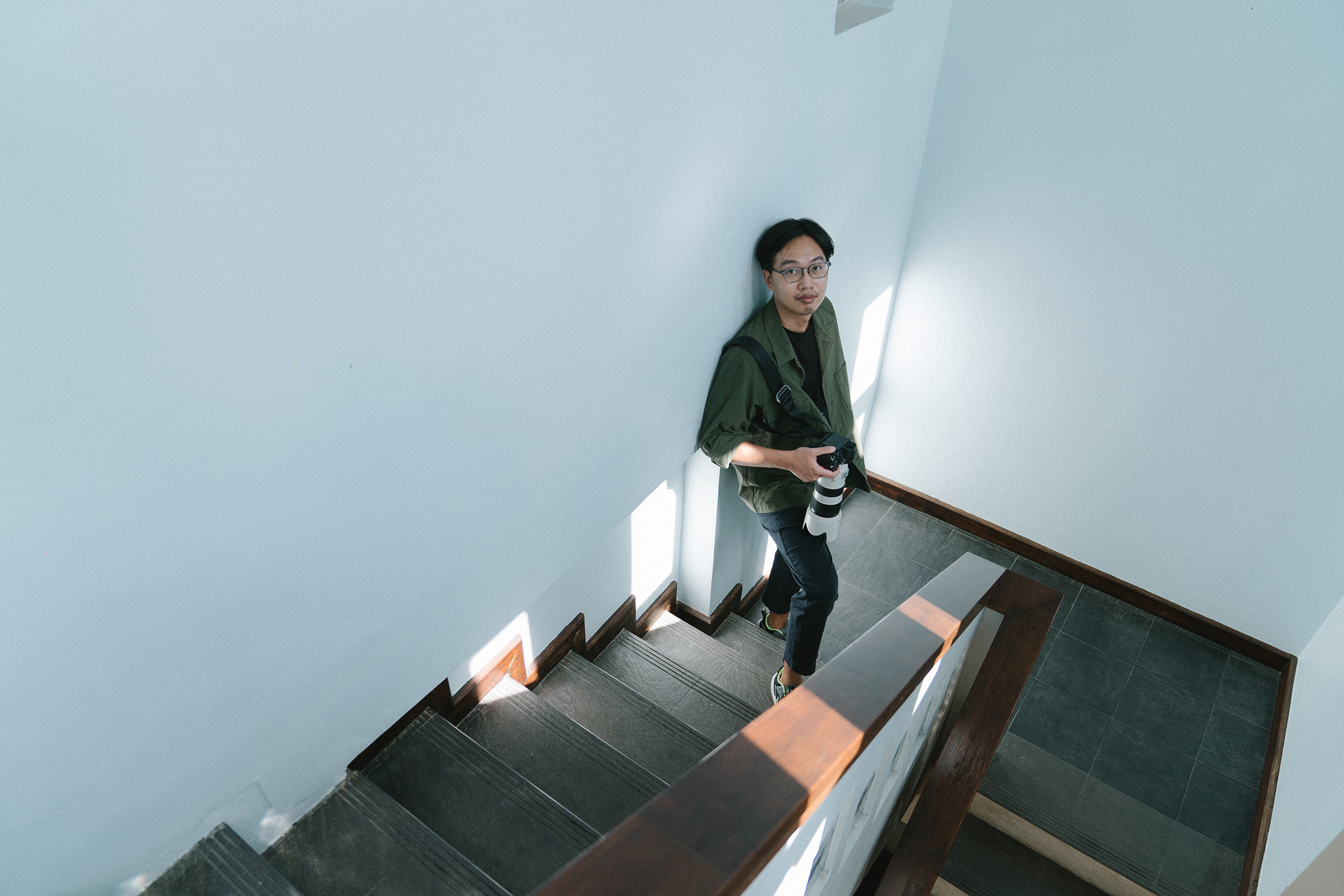
The Working Process of Still Photographer on the Set
After I was chosen for the job, they would provide me with a script to read and visualize the scenes that were interesting. Then I had to discuss with the director about the mood he had in his mind. For The Medium, P’Tong actually had a lot of input. He wanted the atmosphere to be Esaan in a humid and rainy mood. The photos I took therefore had a shady, unsaturated blue tone. Another key point P’Tong gave me was that he wanted photos to be dark with less contrast. From that point I developed the work in my style and presented it to P’Tong. It matched his preference and was published as the work we saw.
The important points in capturing the shots are, firstly, the critical moments in the story, which requires doing research in advance. If I see that the scene is the story’s climax or major turning point of the characters, they are usually key shots that must be captured. Mostly I tend to capture the characters’ reactions. They are parts that contain connotations more than other actions once being taken as still photos.
In The Medium, I assumed that still photos must look mysterious and horrific. It must involve ritual and supernatural stuff. One photo must narrate all of them. It must be capable of telling you this is ‘The Medium’ at first sight. When I worked I would try to include all of these in the photos.
The Background of ‘The Medium’ Poster Photo (The one that Tong shared the block shot photos on his Facebook and reached extensive number of shares)
Normally we wouldn’t get to see posters of Thai films that are still shots from the set. Mostly it would be studio-finished work like ‘Hello Stranger’. As it contains ideas, it tends to be more attractive than still photos of the two main leads traveling South Korea together. As for The Medium, since the beginning the promotional team received a brief from the director that this film demanded realness, which means we had to shoot on the actual locations. The team therefore had to be on the set with us. But usually I don’t like to create particular sets for shooting, because the best circumstance would occur only after an action cue. If I ask to stop the filming for taking still photos, it would be hardly possible that the actors’ acting and other elements like lighting or props would be in a 100% condition. There is no way they could act as well as they do when cued by the director.
As for the photo of Pah Nim (Eing – Sawanee Utoomma) putting both of her palms together under the heavy rain, initially it wasn’t meant to be a poster, but it appeared to convey the mood very well. The photo was originally horizontal so I extended the upper part to make it a poster. The other version was the shot of Ming (Yada – Narilya Gulmongkolpech) seemingly being possessed. It wasn’t expected to be used as a poster either. But at that moment I thought it should work. I waited for the timing before the action cue, asked her to stay still, and it came out as the poster we saw.
The Obstacles of the Job
The one I had it rough was Blackout, 2020. It was a long take film and the camera would follow the characters, which means I had no chance to stand still. I had to keep following it everywhere, which was opposite to my shooting style. It was a pressure at first. For still photos in a film, the most challenging thing was that the camera was always moving, so I had to constantly hide to get out of sight. When the camera moves it would be hard to compose the shot as I want, so I prepared to use a small lens like a fixed lens since it would be hard with the big ones. First I thought it would be tough, but in fact it wasn’t that bad on the actual set, because they had carefully designed the camera movement ahead. It would repeat in every take so I could plan where I was supposed to be to not appear in the frame of the filming camera. On the other hand, The Medium was filmed in the style of Mockumentary, a documentary that was set. Though the camera was also constantly moving, there would be improvisations in every single detail, even the actions of the characters. The filming camera also barely knew how the characters would move. All of a sudden the camera might pan 180 degree backward. My solution was to switch from a fixed lens to a zoom lens, or a long range lens like 24-70 mm and 70-200 mm, as there was no way to know what was going to happen.
Is the Job of Still Photographer still Essential in the process of filming?
In fact still photography is an addition to the set. The filming can proceed without us. I have to work in a way that would disrupt the shoot as least as possible. Filming must always be a priority. To exemplify, the sound is crucially significant. Movies are 50/50 between images and sound. Once my position joins in, the shutter sound would beep as the sound recording progresses. Furthermore if my shutter is louder than the talking voice, that part won’t be used anymore. There used to be a housing technology to mute the shutter sound. But today we have cameras with silent shutter, which is very useful, this silent technology. In the past I had to think back and forth before each press of shutter and avoided interrupting the actors’ voices right? But now with this equipment, I can shoot the actors while they are speaking. It allows me to capture the moments in the film which I couldn’t before.
Nevertheless what matters is purely the techniques, because the file quality of video cameras and photo cameras were drastically different in the previous era. The definitions were on whole different levels, like for Bit Depth (The measure for depth of color: the higher bit depth, the better quality of color details). The current video cameras are at 10 bits but today even common DSLR can offer 12-15 bits. We also have Motion Blur. As filming usually requires a Speed Shutter at 1/50, which would be blurry when captured, even the casual talking scenes won’t be qualified. Once still photos are separated, we can use a higher Speed Shutter for pictures with higher definition.
Besides, we would get to see the other side of the characters, what is not acted in the actual scene, the dimensions that the audience wouldn’t see in the finished movie. Like in ‘I Fine..Thank You..Love You’ (Mez Tharatorn, 2014) Sunny Suwanmethanont grabbed a guitar to play before filming the scene and I happened to capture the shot. The director liked it because it portrayed the character’s personality well. In the film audiences wouldn’t see this character play a guitar. There was only a guitar as a prop in the scenes. For dimensions of films, this is a side story that still shots can deliver.
Oat told me that despite having been in this position for more than 10 years, instead of being equipped with experiences to cope with problems occuring on the set, it turns out that it’s getting harder and harder in each film for him. He needs to look for new things to offer to viewers. Though it gets harder, for Oat himself movies grant him chances to keep exploring new things, and he has never felt tired with the job.
Finally I would like everyone to look at other dimensions of films through images from the lenses of still photographers, because apart from being a promotional photo of the film, it’s also an element that portrays the other voice which we might not hear in the actual film. This includes behind-the-scenes photos that depict the ongoings of the set, and the overall process from every department until the film came out on screen.
